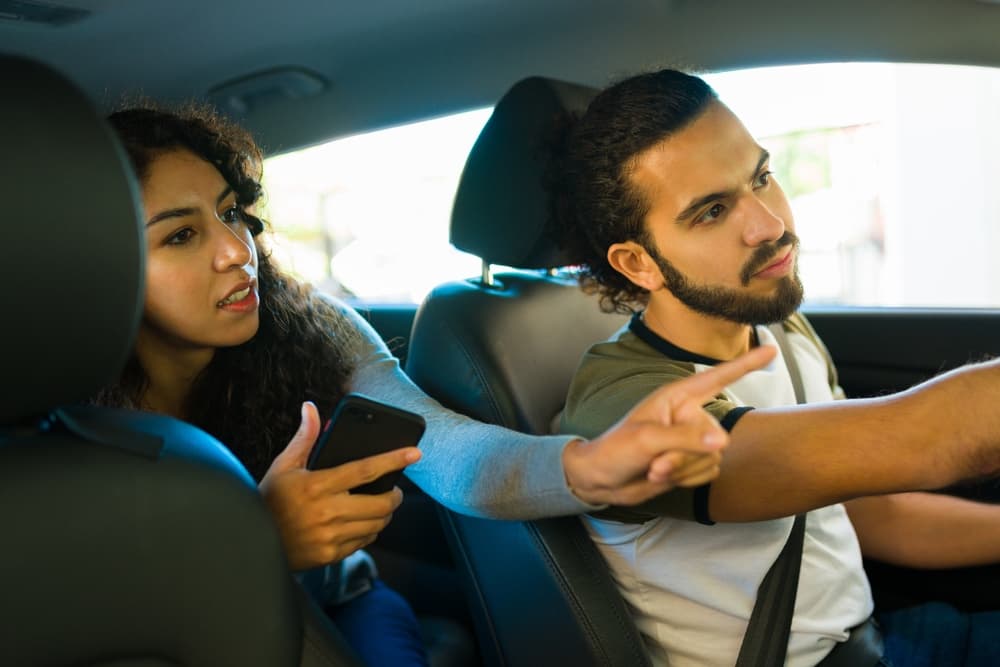In today’s fast-paced world, rideshare services like Uber and Lyft have become a staple in our daily commutes. But what happens when a ride doesn’t go as planned, and you find yourself in a car accident? You’ll need to understand your rights and the steps to take. Here is a brief walkthrough of the process of filing a lawsuit after an Uber or Lyft car accident. If you have injuries, seek representation and guidance from a car accident attorney immediately.
Legal Protections for Rideshare Passengers
You have certain legal rights when entering a rideshare vehicle like Uber or Lyft. These protections aim to provide recourse if something goes wrong.
Right to a Safe and Well-Maintained Vehicle
Rideshare companies are responsible for ensuring that the vehicles in their service are safe and well-maintained. This includes regular inspections and adherence to safety standards. The rideshare driver or company might be accountable if you’re involved in an accident due to a vehicle malfunction or poor maintenance.
Right to Competent and Responsible Drivers
You have the right to expect a competent and responsible driver. Rideshare drivers should follow all traffic laws, drive safely, and not engage in reckless behavior. If a driver’s negligence leads to an accident, they, along with potentially the rideshare company, can be liable for any injuries or damages.
Insurance Coverage
One of the key rights for passengers involves insurance coverage. Rideshare companies provide insurance that can cover passenger injuries and damages in the event of an accident. This coverage is active from the moment you enter the vehicle until you exit. However, the extent of this coverage can vary depending on the situation.
When a rideshare driver is not logged into their respective app, their personal auto insurance is the only coverage in effect. This changes once the driver logs in and is waiting for a ride request. In this phase, the rideshare company provides limited liability coverage, which generally includes specified amounts for bodily injury per person and per accident, as well as property damage coverage:
- Bodily Injury: This typically includes a limit of $50,000 per person.
- Total Bodily Injury per Accident: The total limit often stands at $100,000 per accident.
- Property Damage: For property damage, the coverage usually includes up to $25,000 per accident.
The most comprehensive coverage comes into play when a driver accepts a ride request until the passenger gets dropped off. During this period, the ride-sharing company’s insurance includes liability coverage to cover any damages or injuries to others if the driver is at fault.
- Liability Coverage: This includes $1 million in liability coverage per accident. This is a substantial increase from the earlier phase and aims to cover bodily injuries and property damage to third parties if the rideshare driver is at fault.
- Uninsured/Underinsured Motorist Coverage: This also generally has a limit of $1 million. It applies to situations where another driver causes the accident but does not have sufficient insurance to cover the damages and injuries they’ve caused.
- Contingent Collision and Comprehensive Coverage: This coverage applies to damage to the driver’s vehicle, irrespective of who is at fault. The exact coverage amount typically depends on the actual cash value of the vehicle. There is usually a deductible that the driver must pay before this coverage applies, often ranging from $1,000 to $2,500.
The interaction of these coverages with personal insurance policies is an important aspect to consider. As a passenger, your personal auto insurance might not come into play directly, especially if you are not at fault. However, if you have personal injury protection (PIP) or medical payments (MedPay) coverage, these policies might cover certain medical expenses irrespective of who is at fault. For rideshare drivers, their personal auto insurance is a requirement, but standard policies may not cover commercial activities like ridesharing unless they include specific rideshare coverage.
In some cases, the rideshare company’s insurance acts as secondary coverage, which means it only applies after the personal insurance limits are exhausted. Therefore, in the event of an accident, claiming insurance benefits can involve several steps, starting with notifying the rideshare company immediately through their app. Depending on the circumstances, you may need to file a claim with the rideshare company, the rideshare driver’s personal insurance, or the insurance of another driver involved in the accident.
Given the potential for error when filing insurance claims in rideshare accidents, consulting with a legal professional is advisable. This helps in informed decisions regarding insurance claims and potential legal actions.
Right to Non-Discrimination and Respect
As a passenger, you have the right to be treated with respect and without discrimination. Rideshare companies have policies prohibiting discrimination based on race, religion, sexual orientation, disability, or any other protected status. Complaints of discrimination can be made directly to the company and, in severe cases, may also warrant legal action.
Privacy Rights
Rideshare companies collect personal data from passengers, and you have rights regarding the privacy and security of this information. Companies must adhere to privacy laws, ensuring your data is protected and not misused.
Immediate Steps to Take Following a Rideshare Accident
After a rideshare accident, once you have addressed immediate medical concerns, there are several important steps you can still take to strengthen your case and prepare to bring it to a law firm. These actions will help you build a solid foundation for any potential legal claims.
Documenting the Accident
Even after leaving the scene, you can still document the accident scene. This includes:
- Gathering Photographs: If you were able to take photos at the scene, make sure they are organized and backed up. If not, you might consider returning to the scene to take pictures of the location, including any relevant road signs, traffic signals, or skid marks.
- Collecting Medical Records: Request copies of all medical records related to treatments you received for injuries from the accident. This includes emergency room visits, doctor’s appointments, prescriptions, and other medical interventions.
- Securing a Copy of the Police Report: Obtain a copy of the police report filed after the accident. This document provides an objective account of the incident.
Notifying Relevant Parties
Notify your own car insurance company about the accident. Even if you were a passenger in the rideshare vehicle, your insurance might play a role, especially if you have uninsured or underinsured motorist coverage.
Make sure that the rideshare company is aware of the accident. Both Uber and Lyft have mechanisms in their apps for reporting accidents.
Follow-Up Actions
Follow all medical advice and attend all follow-up appointments. This not only aids in your recovery but also documents the ongoing impact of the accident on your health.
Start a journal documenting your recovery process, including any pain, discomfort, emotional distress, or impacts on your daily life. This can be valuable evidence in demonstrating the effects of the accident.
Consulting with a Law Firm
When you are ready to hire a personal injury lawyer, gather all the documentation you have compiled – photographs, medical records, the police report, communication with the insurance companies, and your personal journal.
During your initial consultation with the law firm, be prepared to provide a detailed account of the accident. Share all the documentation you have gathered. This information will help the legal team understand your case and advise you on the next steps.
The law firm will discuss potential legal strategies with you, including the possibility of a settlement or going to trial. They will also explain the legal process, timelines, and what to expect moving forward.
Determining Liability in Rideshare Accidents
Liability can sometimes be clear-cut, but often, it involves a mix of factors and potentially multiple parties. Here’s a breakdown of each potentially liable party and how liability works in these scenarios:
- The Rideshare Driver
The rideshare driver is often the first person considered when determining liability. If the accident occurred due to the driver’s negligence, such as speeding, distracted driving, or violating traffic laws, they may be held responsible. Proving negligence requires establishing that the driver had a duty of care, breached that duty, and directly caused the accident and your injuries.
- The Other Driver(s)
If another driver was involved in the accident, they can also be held liable. For instance, if the accident was caused by another driver running a red light or driving under the influence, that driver may be responsible for damages. As with rideshare drivers, the same principles of negligence apply.
- The Rideshare Company
Rideshare companies like Uber and Lyft carry their own insurance policies, which can come into play depending on the driver’s status at the time of the accident. These companies might also be liable for negligence in certain circumstances, especially if issues like inadequate driver screening or vehicle maintenance contributed to the accident. However, rideshare companies classify drivers as independent contractors, complicating direct liability under traditional legal principles like respondeat superior.
- Vehicle Manufacturers or Mechanics
In some cases, liability may extend to the vehicle’s manufacturer or a mechanic if a vehicle defect or improper maintenance contributed to the accident. For instance, the manufacturer might be liable if brake failure due to a manufacturing defect caused the accident.
- Government Entities
Sometimes, liability might lie with a government entity, especially if poorly maintained roads or malfunctioning traffic signals played a role in the accident.
Filing Your Lawsuit
Deciding to file a lawsuit after an Uber or Lyft car accident is a significant step. Here’s a look at the process, the types of documentation you’ll need, and how a lawyer can provide representation throughout the lawsuit.
Initial Consultation
This is your first meeting with a lawyer, where you’ll discuss the details of your accident. Be prepared to share all relevant information about the incident, your injuries, and any communication with insurance companies or the rideshare service.
Case Evaluation
The lawyer will review the facts of your case to determine the viability of your claim, identify potential defendants, and estimate the damages you may be entitled to.
Filing the Complaint
If you decide to proceed, the lawyer will file a complaint on your behalf. This legal document outlines your allegations against the defendant(s), the harm you’ve suffered, and the compensation you seek.
Serving the Defendant
After filing the complaint, the defendant must be legally notified of the lawsuit. This typically happens through a process server.
Responses and Pre-trial Activities
The defendant will file a response to your complaint, possibly including defenses or counterclaims. Following this, both parties engage in pre-trial activities such as discovery, where they exchange information, and pre-trial motions, which set the ground rules for the trial.
Negotiations and Mediation
Many cases settle out of court. Your lawyer will negotiate with the defendant’s representatives to reach an agreeable settlement whenever possible.
Trial
The case goes to trial if your rideshare accident attorney cannot reach a fair settlement. Here, each side presents evidence and arguments, and a judge or jury decides how to resolve the case.
How a Rideshare Accident Lawyer Represents You
Throughout the lawsuit, a rideshare attorney plays several roles:
- Advisor: Explaining legal rights and potential outcomes and guiding you through each step of the legal process.
- Advocate: Representing your interests, especially in court, articulating your case, and arguing on your behalf.
- Negotiator: Handling discussions with the defendant’s representatives to pursue a fair settlement.
- Investigator: Gathering and analyzing evidence to build a robust case.
- Litigator: Managing all courtroom proceedings, including presenting evidence and cross-examining witnesses.
Filing a lawsuit after a rideshare accident involves working with complicated legal procedures and dealing with multiple parties. Understanding this process and having a knowledgeable lawyer by your side can make all the difference in the outcome of your case. If you’re considering legal action, seeking professional legal advice is wise to understand your options and protect your rights.
Contact a Car Accident Lawyer Who Handles Rideshare Cases

If you’re involved in an Uber or Lyft car accident, remember you have options. Seeking legal advice can help you understand your rights and the best course of action. A personal injury lawyer can guide you through the process and seek the support and compensation you deserve.


